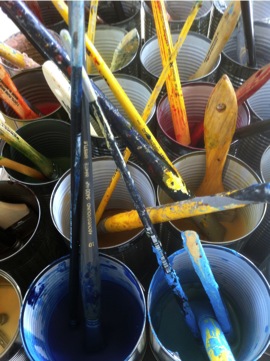
Contemporary Canadian Encaustic Painting
Encaustic painting, is an ancient art form and was practiced by artists as far back as the 5th century B.C.. The word encaustic comes from Greek and means “to burn in”, which refers to the process of fusing the paint. The technique uses heated wax to which coloured pigments are added. The molten wax is applied to a firm surface–usually prepared wood, paper or canvas.
Encaustic has a long history, but it is as versatile as any 20th century medium. Brushes are used to apply and shape the wax before it cools, then it can be polished to a high gloss, it can be modeled, sculpted, textured, and combined with collage materials. The wax cools immediately, so that there is no drying time, yet it can always be reworked. Encaustic paintings do not have to be varnished or protected by glass.
“But will it melt on a hot day?” I get asked this question all the time. The answer is No. The working temperature for the liquid wax is 225 degrees, so unless you are living in an oven the work will be fine hanging in your living room. But, just like any artwork, it is not a good idea to keep it in an area where it will be exposed to direct sunlight or extreme temperatures.

What is Encaustic Painting?



Atelier: The Historic Distillery District, 15 Case Goods Lane, Studio 308 Toronto ON M5A 3C4 tel: 416 556 1307 | david@blttogo.com
Copyright ©2013 David Brown. All Rights Reserved